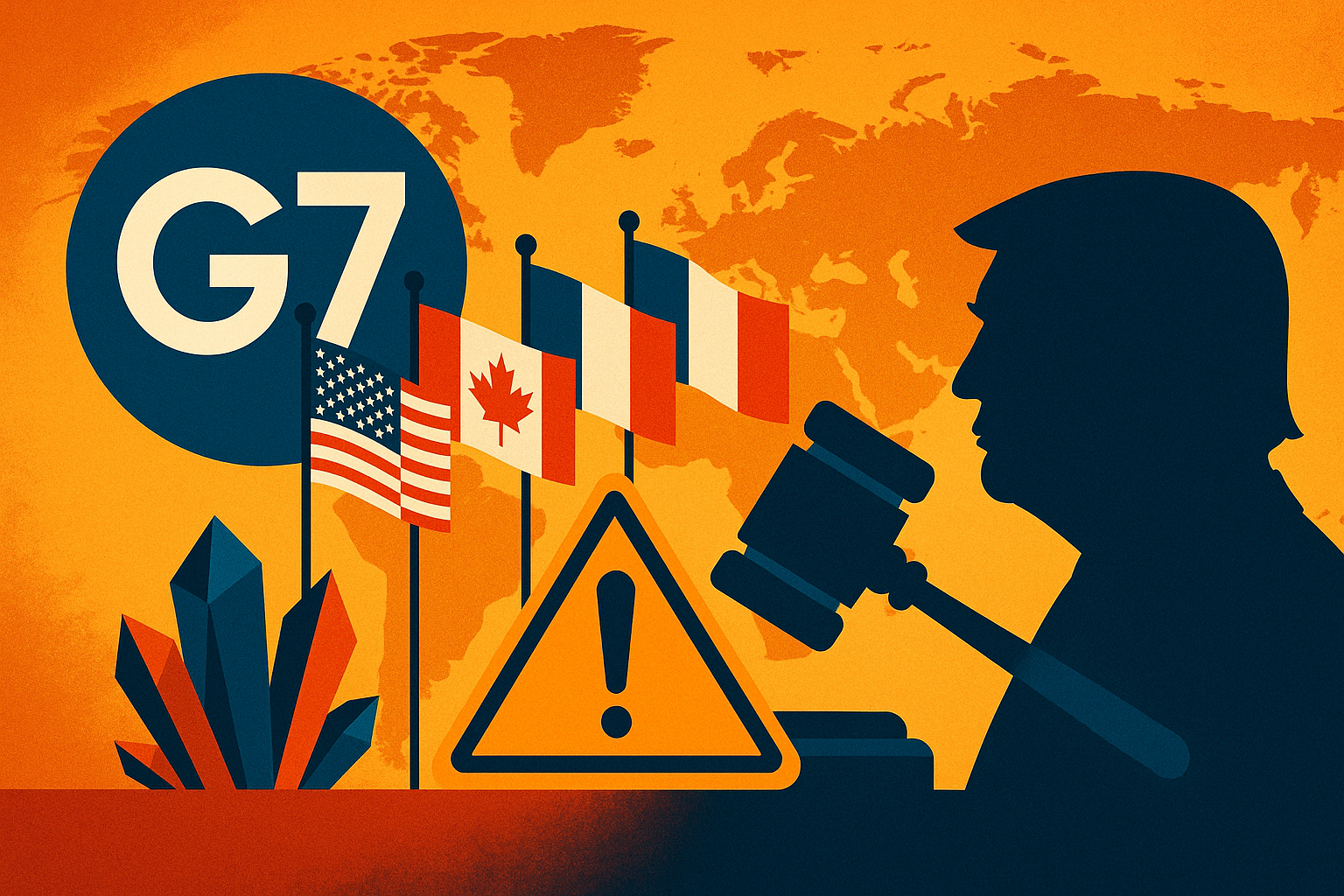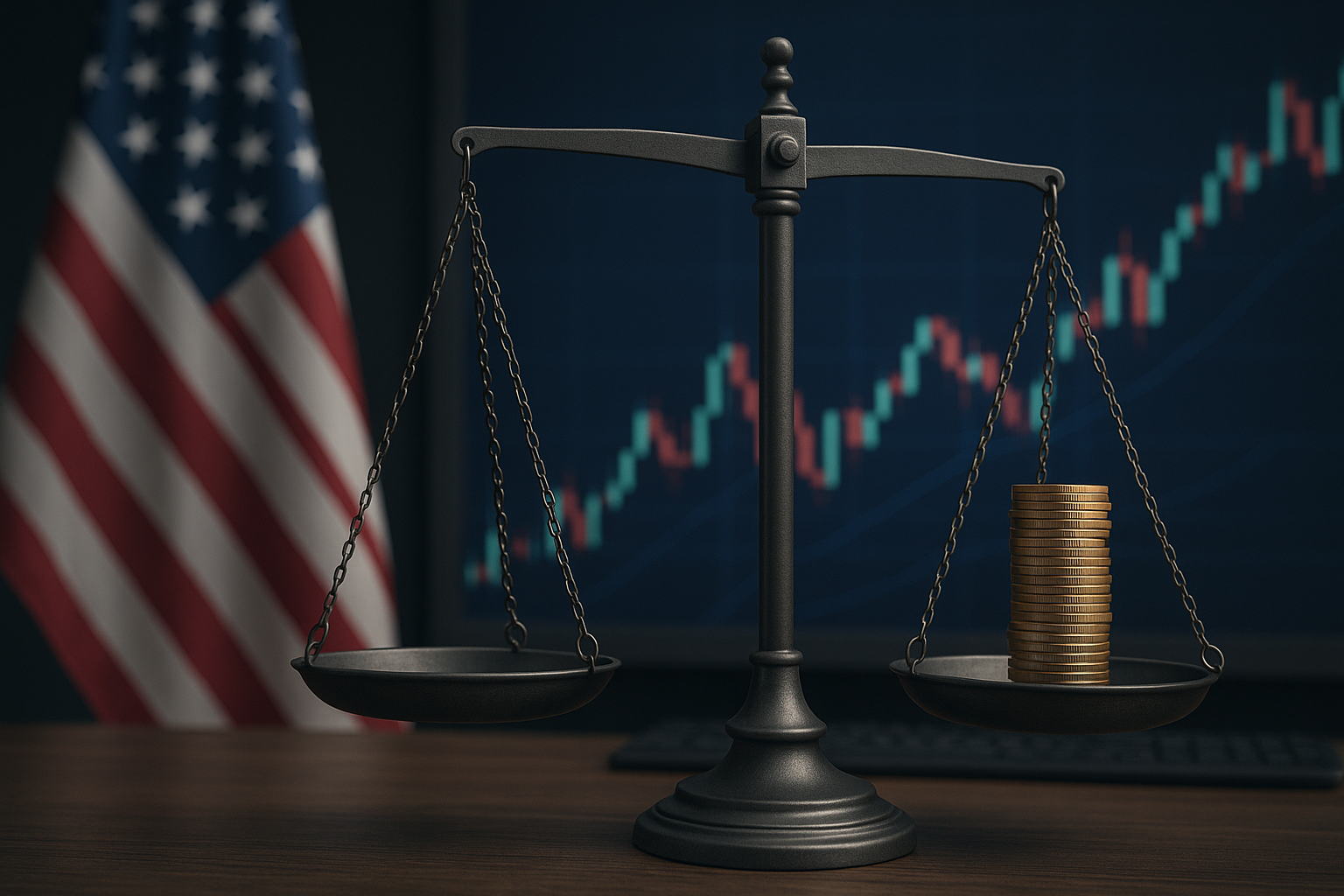All Eyes on G7: Political Shockwaves Set to Shape Economic and Market Strategy
As the Group of Seven (G7) summit convenes this week in Banff, Canada, global investors are tuning in not just for diplomacy—but for signs of impending policy shifts that could reshape trade flows, currency strength, defense budgets, and global risk sentiment.
According to The Guardian, this year’s summit is unfolding under a uniquely charged atmosphere, marked by ongoing Iran-Israel tensions, intensifying trade friction between the West and China, and renewed scrutiny over the return of aggressive domestic policies under President Donald Trump. With tariffs, immigration controls, and foreign policy reversals back on the U.S. table, the G7’s decisions—or discord—could echo sharply through financial markets.
At stake: the continuity of global economic cooperation and the future of multilateralism in a world increasingly fragmented by nationalism and strategic competition.
Global Tensions Meet Market Fragility
Leaders from the U.S., UK, Germany, France, Italy, Canada, and Japan are reportedly focused on four primary concerns:
- Trade Protectionism: President Trump’s renewed push for tariffs on imports from China, Mexico, and even allied nations could spark retaliatory measures. Investors recall the 2018-2019 trade war volatility that battered equity markets and disrupted global supply chains.
- Middle East Instability: The Iran-Israel conflict continues to escalate, with broader implications for oil prices, defense sector activity, and energy supply chains.
- Border and Immigration Policy: Trump’s reinstated hardline immigration stance could influence labor markets, particularly in sectors reliant on foreign workers such as agriculture, construction, and tech.
- G7 Cohesion: Fractures within the group—particularly regarding Ukraine, climate commitments, and China policy—highlight diverging national interests, which may dilute the effectiveness of joint action.
Why This Matters for Investors
Markets thrive on predictability, and G7 summits have historically played a role in offering clarity on global economic direction. But in 2025, clarity is in short supply.
- Currency Volatility: With U.S. policy expected to diverge from its allies, forex markets could experience increased volatility. The dollar, euro, and yen may all respond sharply to G7 joint statements—or lack thereof.
- Commodities and Energy: Any policy outcome that heightens Middle East risk could impact Brent and WTI crude prices. Similarly, coordinated action on clean energy subsidies or critical minerals could affect commodity equities.
- Equity Sector Sensitivity: Defense stocks (e.g., Lockheed Martin, BAE Systems), energy majors (e.g., Shell, Chevron), and U.S. industrial exporters (e.g., Caterpillar, Boeing) are especially exposed to policy moves discussed at the summit.
As Bloomberg reported ahead of the event, “The G7 is less a policy engine and more a signaling device for global capital. Investors watch not for laws—but for direction.”
Key Investment Insight: Navigate With Policy Awareness
In an environment where politics can swiftly impact prices, investors should:
- Stay informed on macro themes emerging from G7 summits, such as tariff policies, global tax initiatives, and defense spending shifts.
- Hedge geopolitical exposure through commodities, gold, and market volatility instruments if the summit signals instability.
- Monitor ESG & trade regulation updates, especially as they relate to emerging markets, supply chain diversification, and resource nationalism.
A policy-driven investment thesis—grounded in global alignment or fragmentation—will likely be a defining trend in second-half 2025 strategies.
Investor Strategy Outlook
This G7 summit is not just another diplomatic event. It’s a weather vane for where global cooperation is headed and how governments plan to manage interconnected crises. For investors, the key isn’t just to track the headlines—but to interpret what they mean for sectors, regions, and asset classes.
As market sentiment grows more reactive to geopolitical cues, now is the time to reassess exposure and allocate capital with both macro foresight and portfolio agility.
Stay Ahead with MoneyNews.Today
For ongoing updates on how political shifts impact global markets, follow MoneyNews.Today—your trusted source for market-savvy reporting at the intersection of policy and investment.





